A Guide To Growing Grass From Seed
Looking to create the perfect lawn on a low budget? Nothing beats sowing a luscious green lawn with grass seed, no matter how big your garden or what you plan to use it for. So long as you have the time and patience to grow a new lawn from seed, you’ll be rewarded for your efforts with a healthy, attractive lawn that can withstand everything that life throws at it.
In our guide to growing grass from seed, we discuss the benefits of grass seed, how to choose the best grass seed for your needs, outline simple steps for sowing grass seed, and provide tips to ensure that you achieve the best possible lawn for the least amount of money.
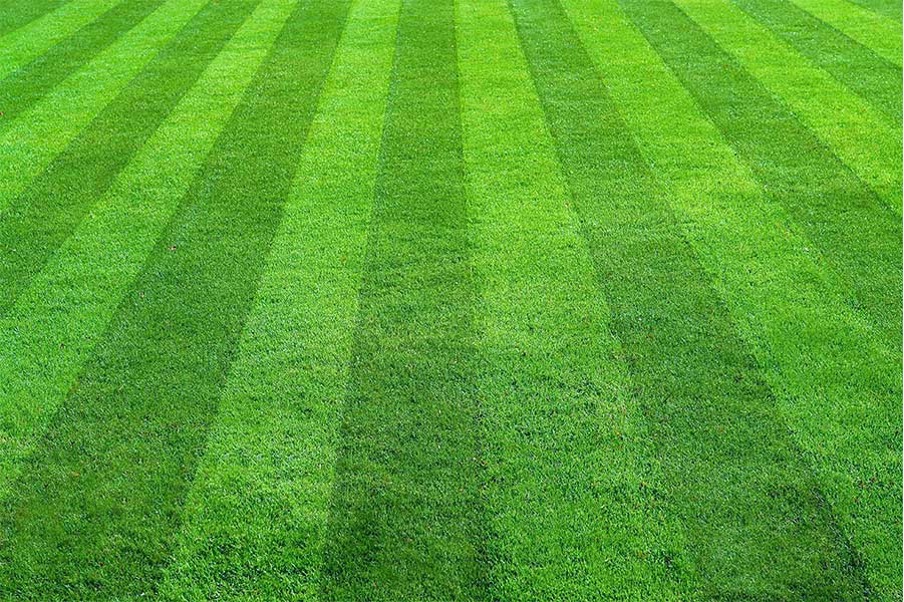
Should you choose grass seed over turf?
What is the best grass seed to sow?
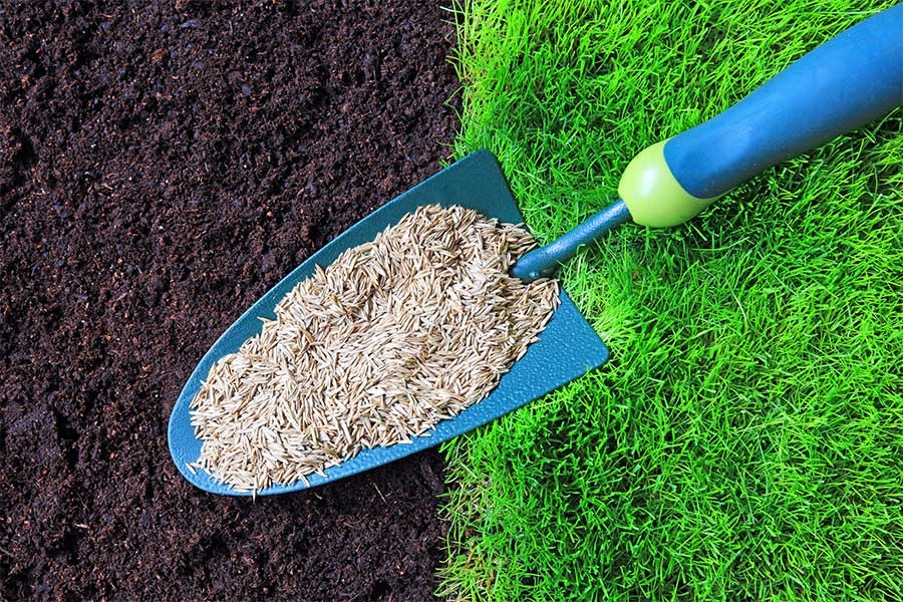
Although growing a new lawn from seed takes a little longer than laying turf, there are several benefits to using grass seed.
- Cost – A 1.5kg box of quality grass seed will cover an area of around 45 square metres and may cost around £20 depending on the brand and quality. The equivalent turf would cost in the region of £250-£300 (quality dependant) excluding delivery. Growing a lawn from seed can be significantly cheaper than turfing.
- Speed – It takes less time to spread grass seed than it does to lay turf.
- Ease – Grass seed is easy to plant with a handheld or push along hopper spreader.
- Choice – There is a greater choice of grass seed than turf. This makes it easier to select the best grass seed for the type of lawn you want, or the conditions in your garden.
- Store and repair – Grass seed is great for patch repairs and lawn maintenance. It is easy to store and will keep for years, meaning that you can ensure that you use the same type of seed each time repairs are required.
There are also some disadvantages to using grass seed that should be considered. The time it takes for grass seed to fully establish is the main disadvantage. Turf gives the look of a new lawn in only a matter of hours and can be used in around 4-6 weeks. In contrast, grass seed will typically require 6-8 weeks before it becomes fully established and will need to be treated gently for up to 8 months. It should also be noted that before the seed starts to take, if not covered, it can be eaten by birds and heavy rain can wash seeds away, particularly on slopes.
When Is the Best Time to Sow a Lawn?
The ideal soil temperature for growing grass from seed is 10-18 degrees centigrade, although there are varieties that will grow from 7 degrees centigrade. The ground should be moist, but not waterlogged. If the temperature is too low, the seed with simply remain dormant until temperatures rise. Based on typical UK soil temperatures, the ideal time to sow grass seed is in spring (April – May) or early autumn (September to mid-October).
Experts suggest that the best time to sow grass seed, and for repairing and overseeding established lawns, is early autumn as the soil is still warm and there are less weeds. It is possible to sow grass seed in the summer months, but it will require frequent watering for the seed to establish. Watering should be carried out in early morning and evening to prevent evaporation.
What is the best grass seed to sow?
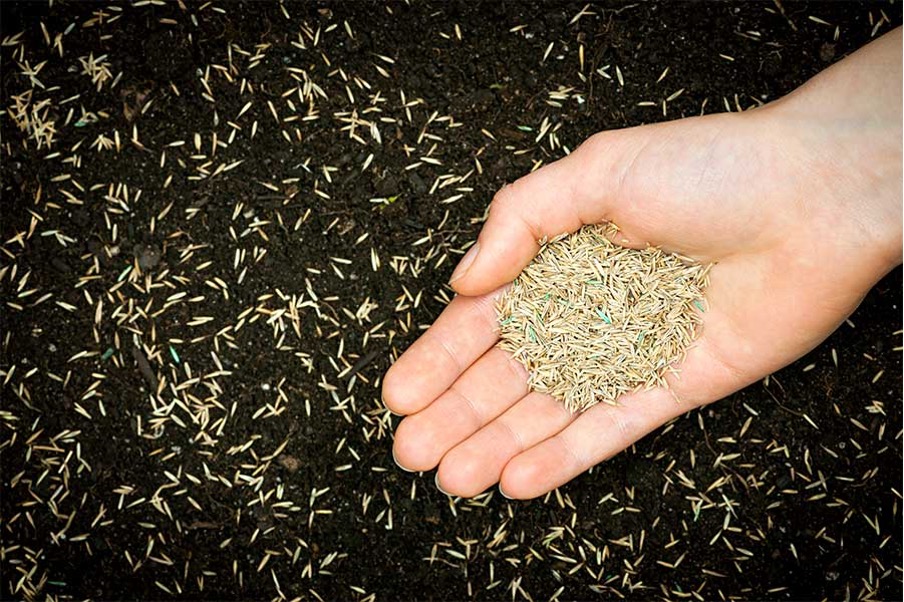
Before sowing your new lawn, it is important to select the best grass seed for the type of lawn you want and what it will be used for. For ornamental lawns, where looks are prioritised over resistance to heavy foot traffic, choose a seed with a fine leafed grasses that will create a soft dense lawn. Ornamental grass varieties tend to be slower growing and can be mowed to a lower height once fully established.
For a general-purpose lawn, choose a seed with a mixture of hardwearing grasses. This type of lawn will look smart and will stand up to heavy foot traffic, great for children and pets. Hardwearing grass varieties tend to be faster growing and require more frequent mowing. In our experience, Rolawn Medallion is the best grass seed for creating great looking and durable lawns, perfect for families and pet owners.
To ensure the best results, it is worth investing in the best quality grass seed from a reputable brand. As with most things in life, you get what you pay for. Cheap grass seed can contain weeds and coarse ryegrass varieties that are better suited to agriculture than domestic lawns. The RHS provide the following advice for buying grass seed “check the ingredients – any perennial ryegrass must be ‘turf’ or ‘fine’ ryegrass”.
How to grow grass from seed in 3 simple steps
Step 1: Soil Preparation
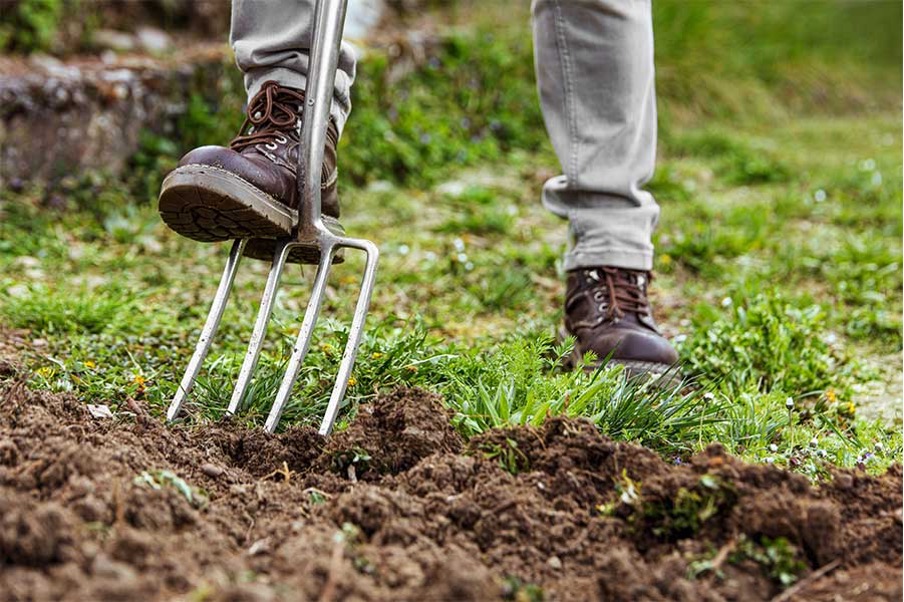
The key to establishing any new lawn, particularly if growing from seed, is good soil preparation. Taking time to remove plants, weeds, and stones will result in a healthier and better-looking lawn. These are the recommended soil preparation steps for preparing soil for growing a lawn from seed and turfing a new lawn.
- Remove plants, weeds, and surface stones to leave clean bare soil. If you intend to use a weedkiller, ensure that it is not a residual weedkiller, these can remain in the soil and damage the new grass seed or turf. Check the manufacturer’s instructions for how long to leave the soil before seeding.
- Dig over the soil with a fork and break down any large clumps. While doing so, remove any stones and roots from the soil.
- Compact the ground by walking on it or use a garden roller, then lightly rake the ground in several directions to ensure the ground is level.
- Add a 3-4cm layer of seeding soil such as Rolawn Turf & Lawn Seeding Topsoil. Seeding topsoil’s are friable soils mixed with sand, soil conditioners, and fertilisers to create the best possible conditions for grass seed and turf to establish. If your soil is in good condition, you can simply add a lawn fertiliser such as Rolawn GroRight Lawn Establishment Fertiliser. Rake over the surface to ensure the ground is level.
Step 2: Sowing grass seed
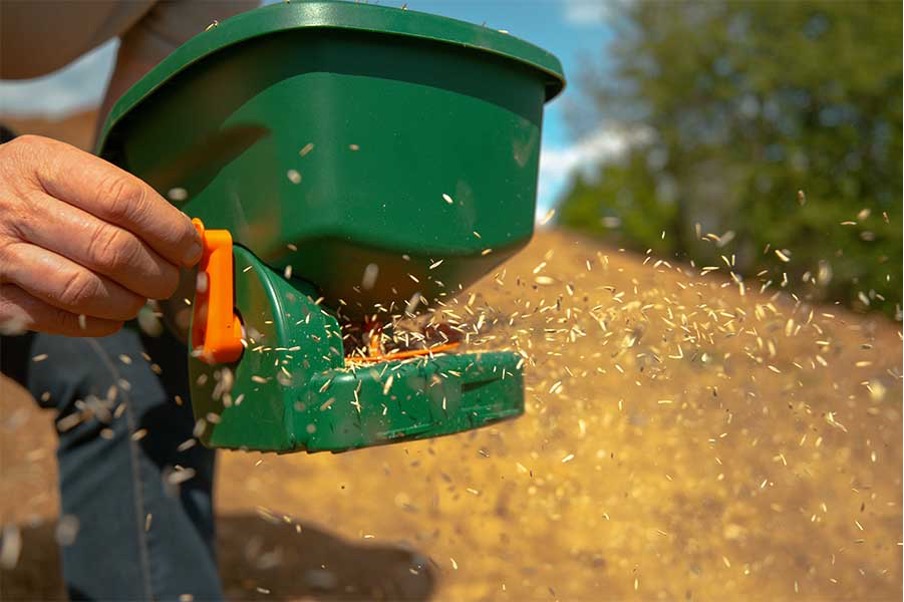
Select you grass seed carefully. Buy good quality grass seed and ensure that is suitable for your environment and type of lawn you want to create.
- Measure the area for your new lawn, this will allow you to weight out the correct amount of grass seed to cover the area. The recommended quantity of seed required for each square metre of lawn will be provided by the manufacturer’s instructions on the box.
- Shake the grass seed before opening to ensure that it is well mixed, quality grass seeds will often include fertilisers to aid establishment.
- Weigh out the correct quantity of seed for your lawn and split into two batches.
- A handheld or push spreader will distribute the seed evenly, but you can also spread grass seed by hand. Sow the first batch of grass seed over the whole area, working up and down in parallel lines ensuring it is evenly distributed. Repeat the process with the second batch of seed, this time spreading at a right angle to your first spread. This method will ensure complete and even coverage.
- Lightly rake over the seeded topsoil to ensure that most of the seeds are covered with soil.
- If the forecast is dry, water the newly sown area with a light spray. Do not saturate or use a heavy or concentrated jet of water as this can wash away the grass seed.
Step 3: Establishing your new lawn and aftercare
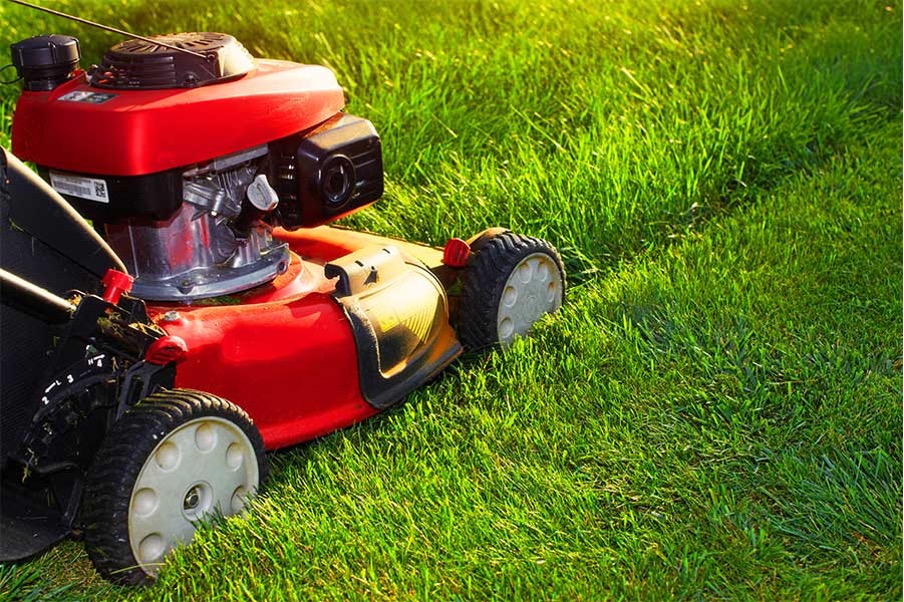
Sowing a new lawn from seed, or laying new turf for that matter, is not a “fit and forget” process. Your new lawn will require some care and maintenance. Here are some tips to help your grass seed establish and mature into a thick healthy lawn.
- Grass seed typically takes 1-2 weeks to establish. Water daily until green shoots are well established. Do not soak, strong jets of water can disturb and wash away the grass seed. Use a garden sprinkler to ensure even saturation over a wide area.
- If seeding a new lawn in very warm weather, it may be necessary to water twice daily. This is best done in early morning and early evening when not in direct sunlight.
- Do not mow your new lawn until it is 5-7cm in height. When mowing for the first time, only around a third of the height should be removed and it is advisable to cut at your movers highest setting.
- If your lawn was seeded in autumn, it is likely that it will not require mowing again until the spring. For lawns seeded in spring, continue to mow weekly, gradually reducing the cut height until a normal height is achieved. In warm weather it is advisable to pause mowing and leave the blades of grass longer until temperatures reduce.
- Remove weeds and coarse grasses carefully by hand. It is not advisable to use weedkillers on new lawns or turf for a minimum of 6 months.
- It is advisable to avoid heavy traffic on new lawns for 6-8 months to allow the roots to fully establish.
For more aftercare information read our seasonal lawn care guide, packed with expert tips and advice to keep your lawn looking at its best year-round.
Get everything you need for the perfect lawn at AWBS
Whether you need quality grass seed or turf for a new lawn, or simply want to give your lawn some TLC, we have everything you need to achieve the perfect lawn. Available to buy online or from your local AWBS branch in Oxfordshire and Swindon, we have quality Rolawn grass seed and turf in stock, with a comprehensive range of soils, composts, and fertilisers at great low prices. And if you live within 25 miles of our branches, we will deliver for free with no minimum order value restrictions. Use the free delivery checker on our website to see if you qualify.
Related Products
- https://www.awbsltd.com/seasonal-and-garden/turf-and-seed/rolawn-medallion-turf
- https://www.awbsltd.com/seasonal-and-garden/turf-and-seed/rolawn-medallion-lawn-seed
- https://www.awbsltd.com/seasonal-and-garden/turf-and-seed/rolawn-medallion-seed-20kg
- https://www.awbsltd.com/seasonal-and-garden/turf-and-seed/rolawn-groright-lawn-establishment-fertiliser
- https://www.awbsltd.com/seasonal-and-garden/topsoil/rolawn-turf-seeding-topsoil
- https://www.awbsltd.com/seasonal-and-garden/topsoil/rolawn-top-dressing


